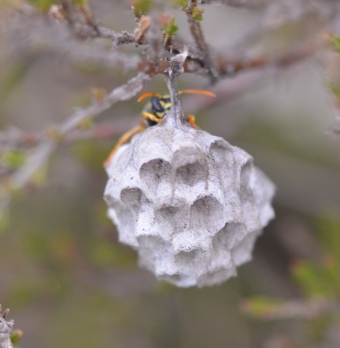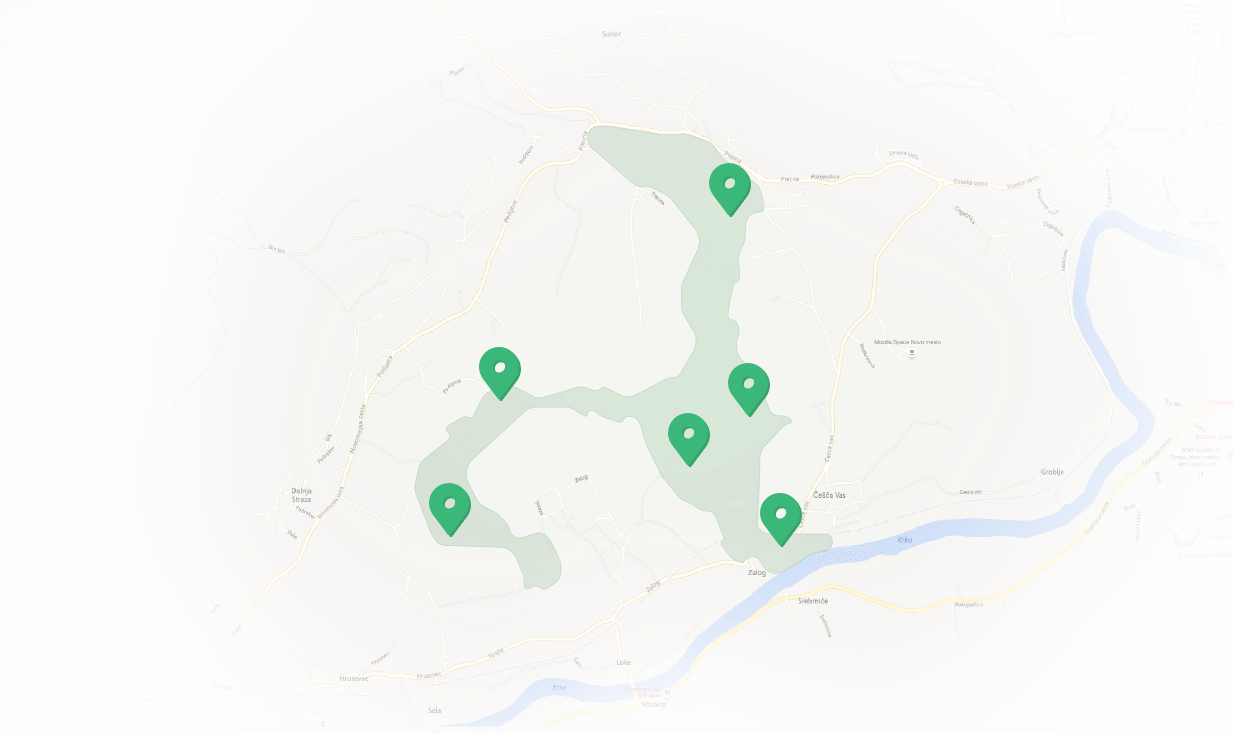European paper wasp Polistes dominula

Features
Quite slender wasp with a characteristic black-yellow coloration.
| Species | Insect |
| Living space | Bush crowns, Meadow |
| Size | 12-18 mm |
Description
The head is black with narrow yellow spots above the tentacles (eyebrows) and a narrow yellow spot near the eyes. The jaws (mandibles) are black in females (sometimes with a yellow dot) with a completely yellow frontal (maxillary) shield (sometimes with a black dot). The tentacles are cuneate, in the lower part with a strongly elongated ankle (this is black on the upper side, yellow on the lower side), the upper ankle joints are very short, mostly orange. The breast is narrowly cylindrical, black, yellow bordered in the upper part and with yellow spots in the front part along which there are narrow oblique lines, three pairs of square spots are in the lower part. The hindquarters are strongly narrowed in the anterior part, almost pinched and bent from the side, towards the bottom it is pointed, characteristically black-yellow banded; on the basal part it has an arrow-like black spot, followed by a wide black band with a yellow spot on each side. The black bands on the back segments have a wavy bottom edge. The wings are brownish, translucent. The legs are yellow to orange-yellow, the shins are almost entirely black, at least on the upper side. Behavior and development: a social species of wasp that is very common in meadows, where it arranges a paper nest in low grass, between branches, under roof tiles or on fences, which is attached to the base with a thin stalk. The nest is a simple hourglass that is often turned sideways or down and is often guarded by one to two family members. At the beginning of spring, it is built by several females together, one of which then takes on the role of the dominant female (queen), the others take on the role of workers. Later, males develop in the family, with which young females mate. The family breaks up sometime in late summer with surviving males and young fertilized females overwintering in small groups. The species is not as aggressive as some other members of this family, feeding mainly on smaller insects, nectar and fruit juice.
Features Temenica (3)
SPECIAL ogr.




